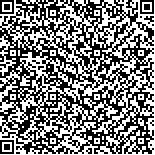|
| 引用本文: | 王延清,张晔,牟文秀,庞志鹏,陈晓丽.利用脂肪酸标记法对南极罗斯海桡足类优势物种的食性研究[J].海洋科学,2021,45(12):31-38. |
| |
|
| |
|
|
| 本文已被:浏览 1395次 下载 952次 |

码上扫一扫! |
|
|
| 利用脂肪酸标记法对南极罗斯海桡足类优势物种的食性研究 |
|
王延清1,2, 张晔3, 牟文秀1,4, 庞志鹏1, 陈晓丽1,4
|
|
1.中国科学院 海洋研究所 海洋生态与环境科学重点实验室, 山东 青岛 266071;2.中国科学院 海洋研究所 工程技术部, 山东 青岛 266071;3.国家海洋局 东海海洋环境调查勘察中心, 上海 200137;4.中国科学院大学, 北京 100049
|
|
| 摘要: |
| 脂肪酸标记法是浮游动物食性研究的一种重要方法。将提取的脂质区分为中性脂和极性脂,可以进一步查明不同脂质在浮游动物食性研究中的作用。本研究通过分析不同脂质的脂肪酸构成,对2013年1月中国第29次南极考察期间在罗斯海采集的5种优势种桡足类的食性进行了研究。结果显示:5种桡足类的极性脂脂肪酸具有相似的组成,无法给出桡足类食性差异信息,食性信息主要体现于中性脂脂肪酸组成的差异。通过分析中性脂脂肪酸的组成信息,将5种桡足类的食性分为三类:Calanoides acutus和Calanus propinquus主要摄食浮游植物,Metridia gerlachei及小型桡足类Oncaea curvata为杂食性种,Paraeuchaeta antarctica为肉食性种。本文的结果说明,在应用脂肪酸作为浮游动物食性标记的研究中,应尽量区分不同脂质种类的脂肪酸信息,从而得到更为精确的浮游动物食性信息。 |
| 关键词: 罗斯海 桡足类 脂肪酸标记 食性 |
| DOI:10.11759/hykx20201113003 |
| 分类号: |
| 基金项目:国家自然科学基金青年基金(41706189);国家海洋局海洋生态环境科学与工程重点实验室开放基金(MESE-2015-01) |
|
| Application of fatty acids in the diet analysis of five copepod species in Ross Sea, Antarctic |
|
WANG Yan-qing1,2, ZHANG Ye3, MOU Wen-xiu1,4, PANG Zhi-peng1, CHEN Xiao-li1,4
|
|
1.Key Laboratory of Marine Ecology and Environmental Sciences, Institute of Oceanology, Chinese Academy of Sciences, Qingdao 266071, China;2.Engineering and Technology Department, Institute of Oceanology, Chinese Academy of Sciences, Qingdao 266071, China;3.East Sea Marine Environmental Investigating & Surveying Center, State Oceanic Administration, Shanghai 200137, China;4.University of Chinese Academy of Sciences, Beijing 100049, China
|
| Abstract: |
| Fatty acid is a marker of food composition in zooplankton diet analysis. Previous studies focused on using the total fatty acid of total lipids for food composition analysis. In this study, the extracted lipids were divided into neutral lipids (NL) and polar lipids (PL). We attempted to use the fatty acid information of classed lipids to identify the diet of five common copepod species in the Ross Sea, Antarctica, which are Calanoides acutus, Calanus propinquus, Metridia gerlachei, Oncaea curvata, and Paraeuchaeta antarctica. Our results revealed that the diet of five copepod species could be divided into three feeding habits. The copepods, C. acutus and C. propinquus, have a high fatty acid content of 20:1 + 22:1, indicating herbivorous feeding; M. gerlachei and O. curvata manifested omnivorous feeding; and C. propinquus are likely to be carnivorous because of the high 18:1n9 content. The fatty acids of PL among different species are also similar, while the fatty acids of NL are different, indicating that the diet information is mainly provided by the fatty acids of NL rather than PL. |
| Key words: Ross Sea copepod fatty acids marker diet |
|
|
|
|
|
|
